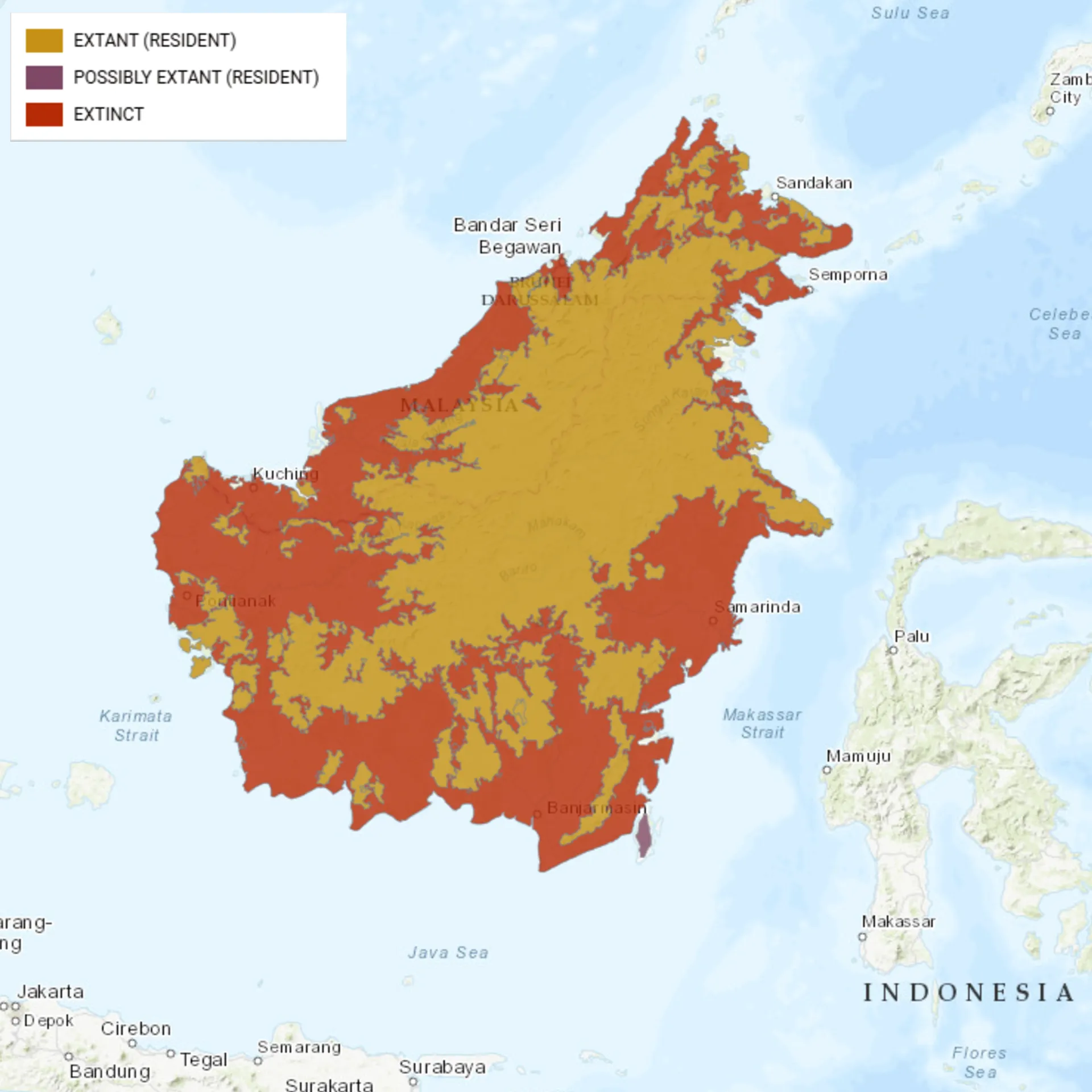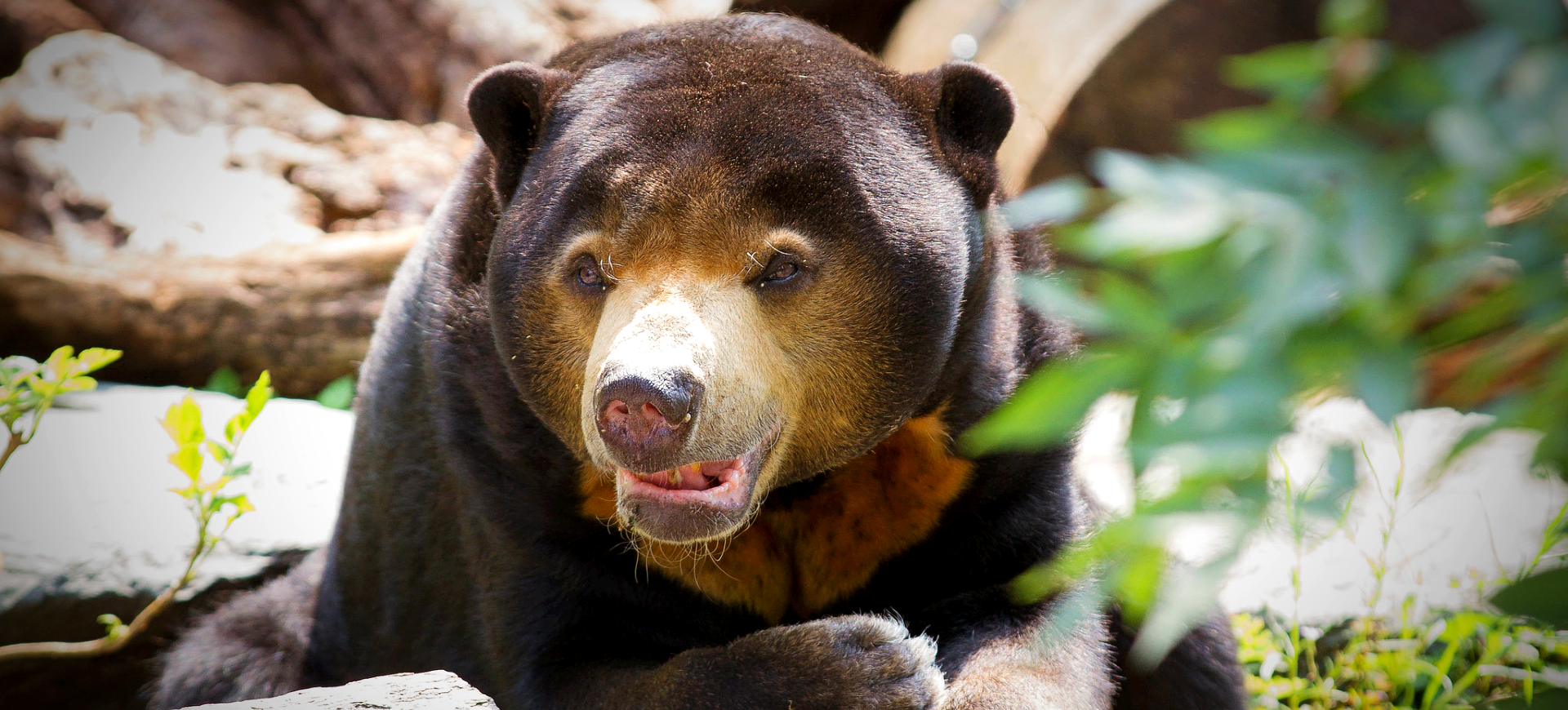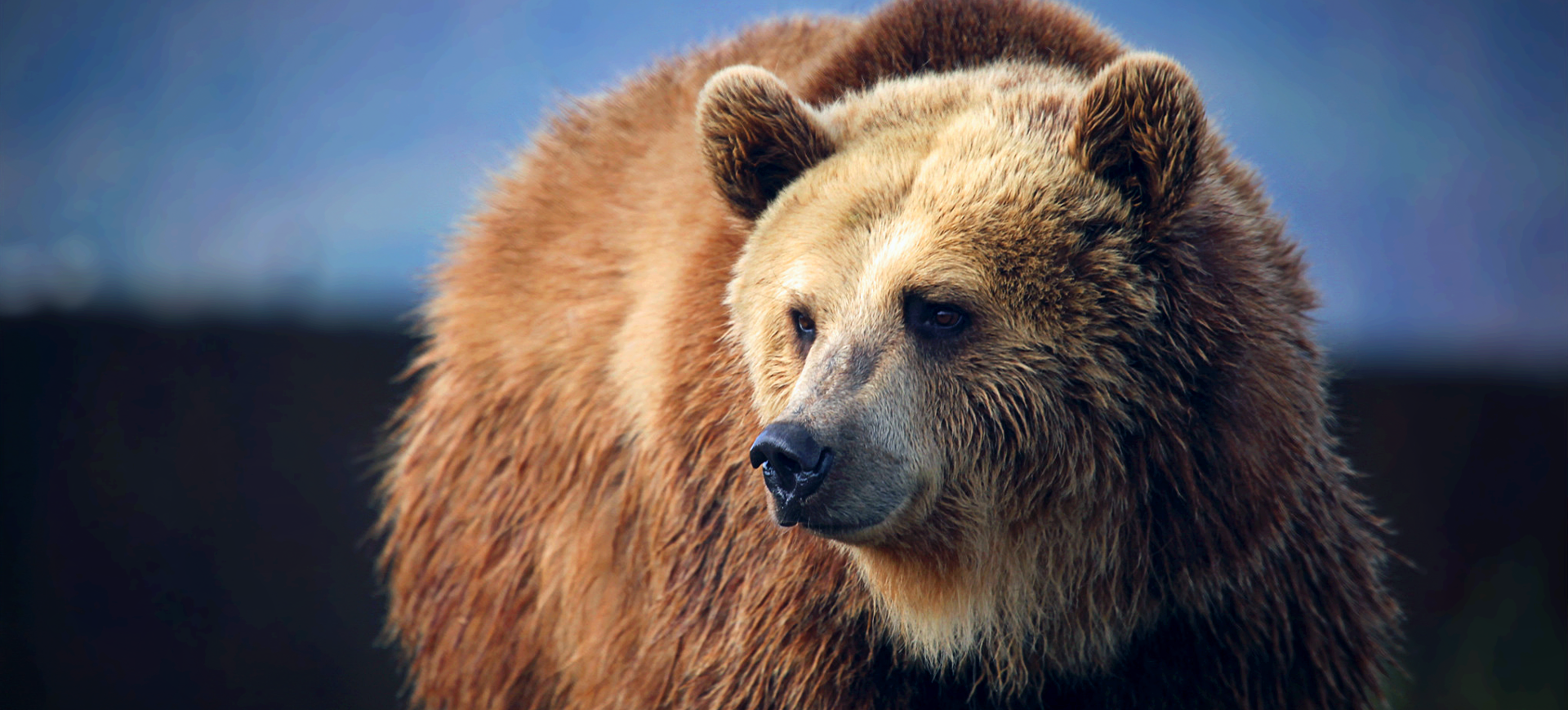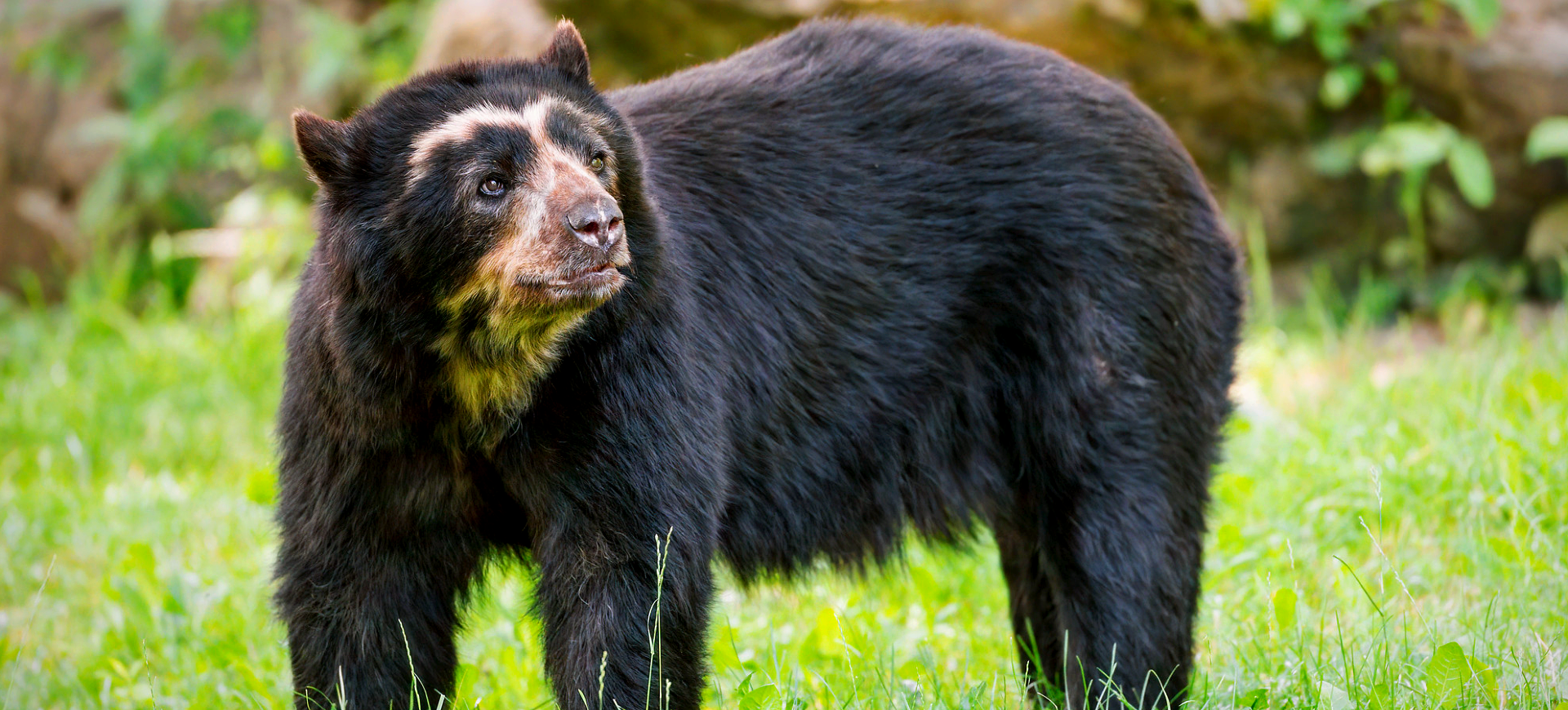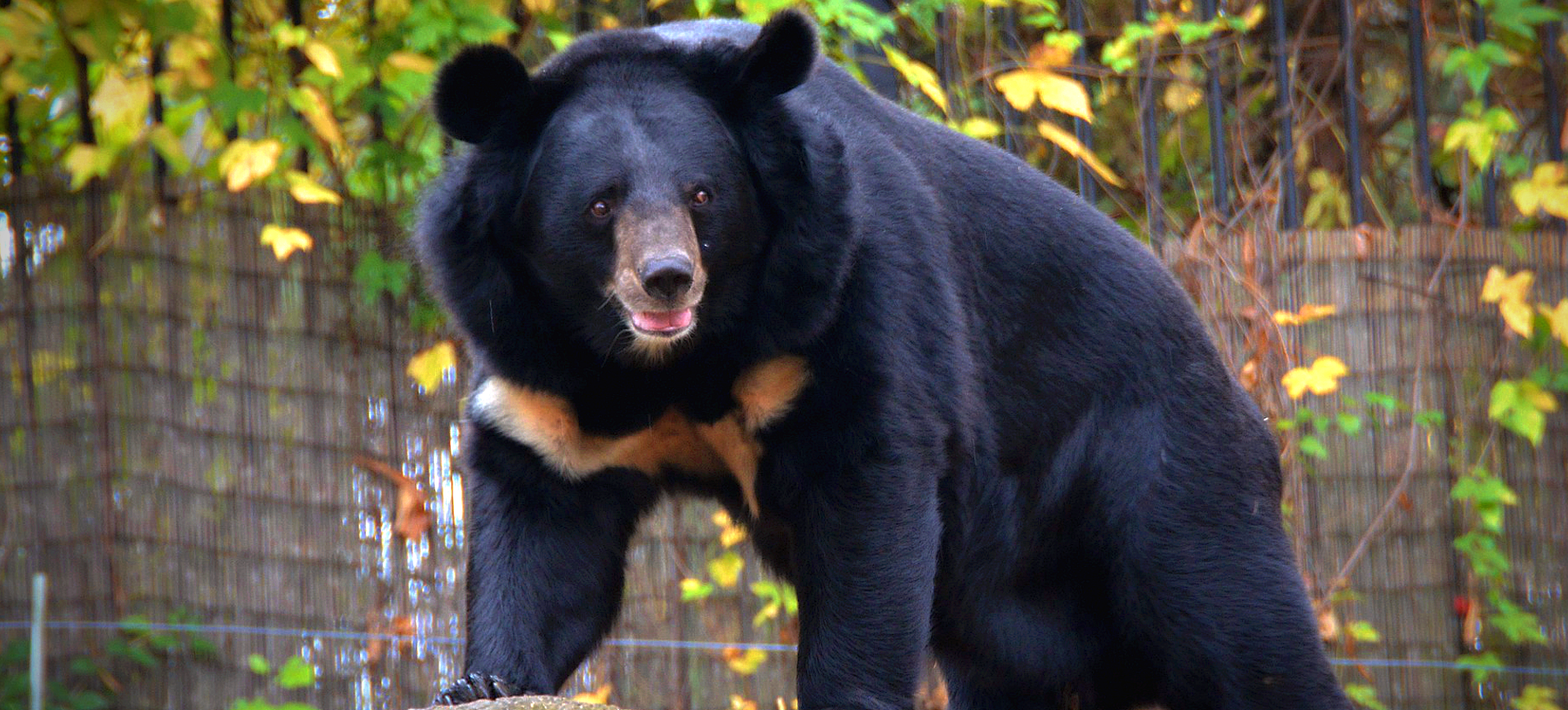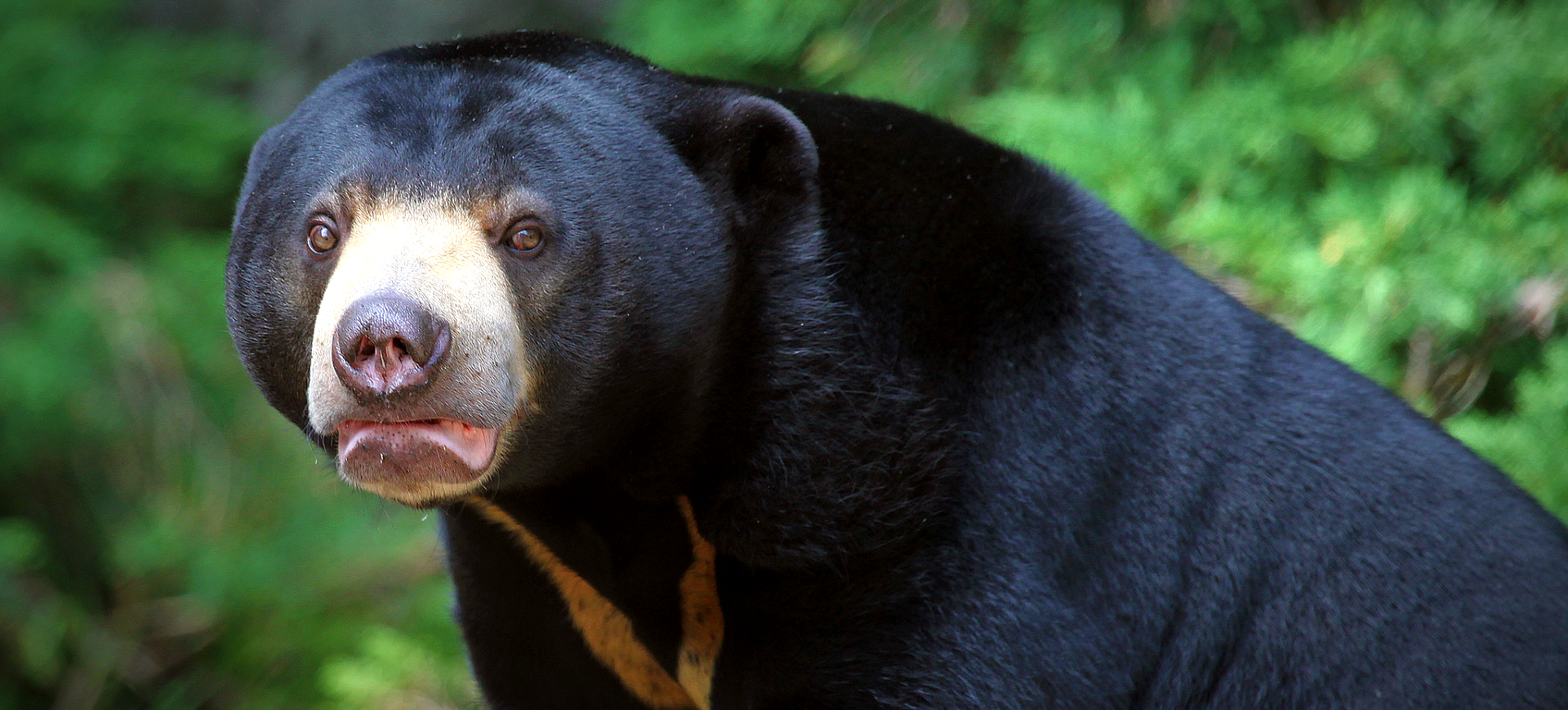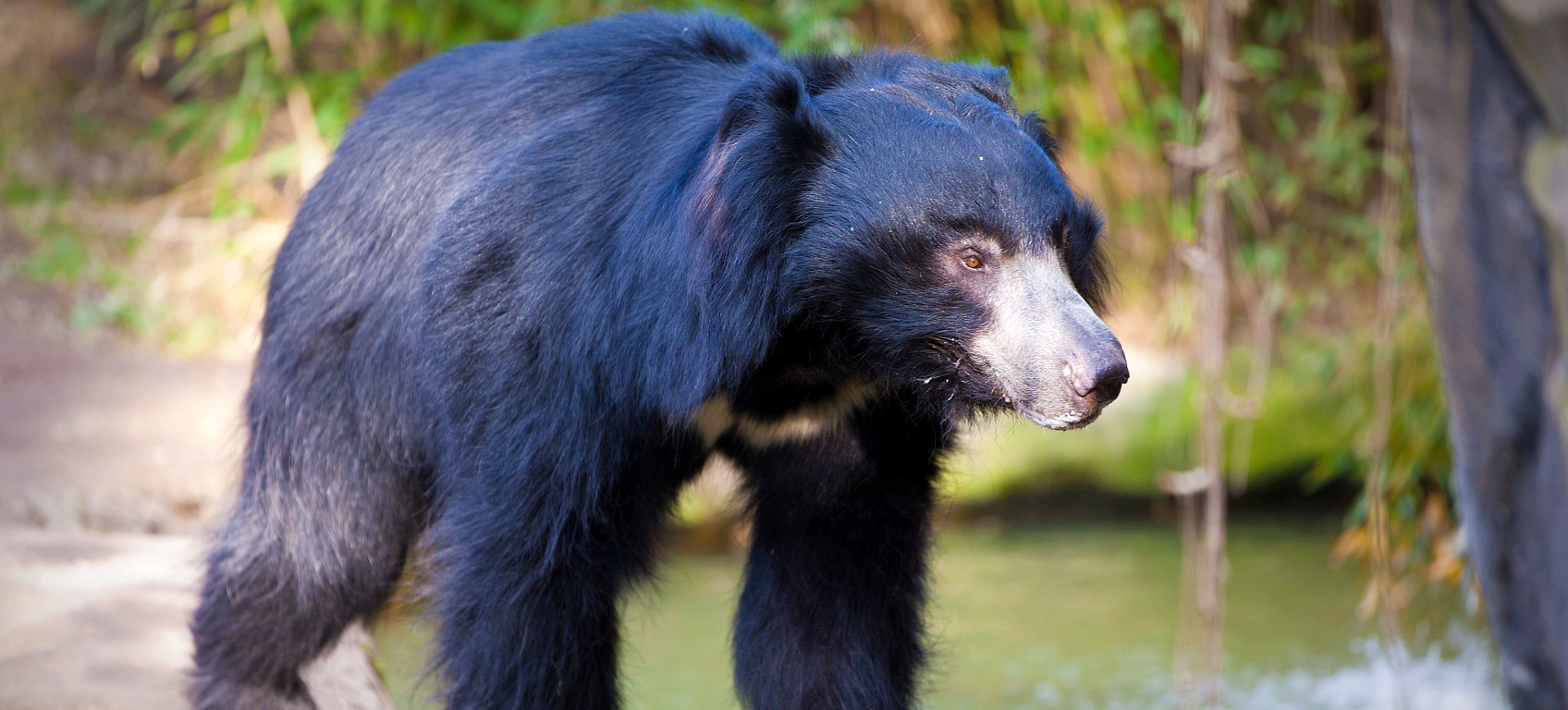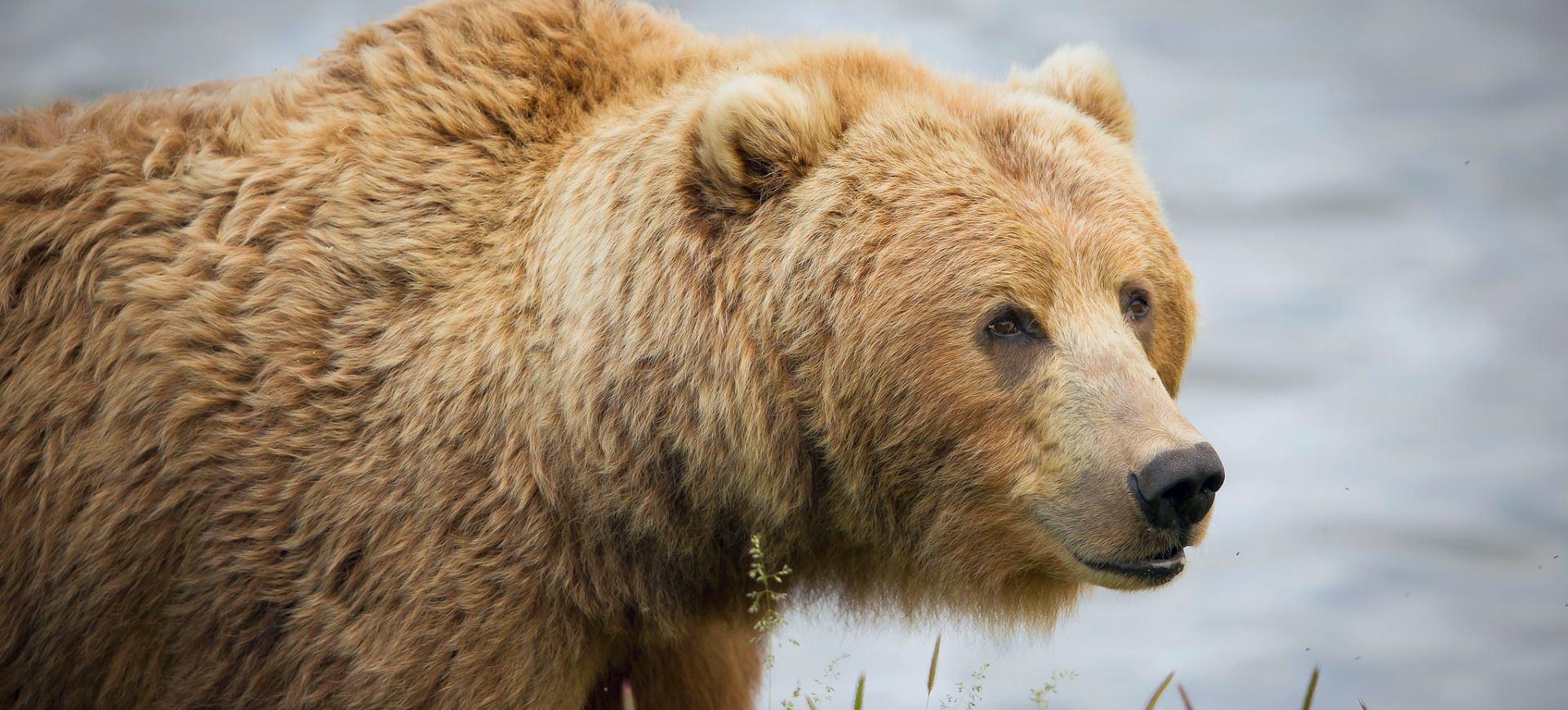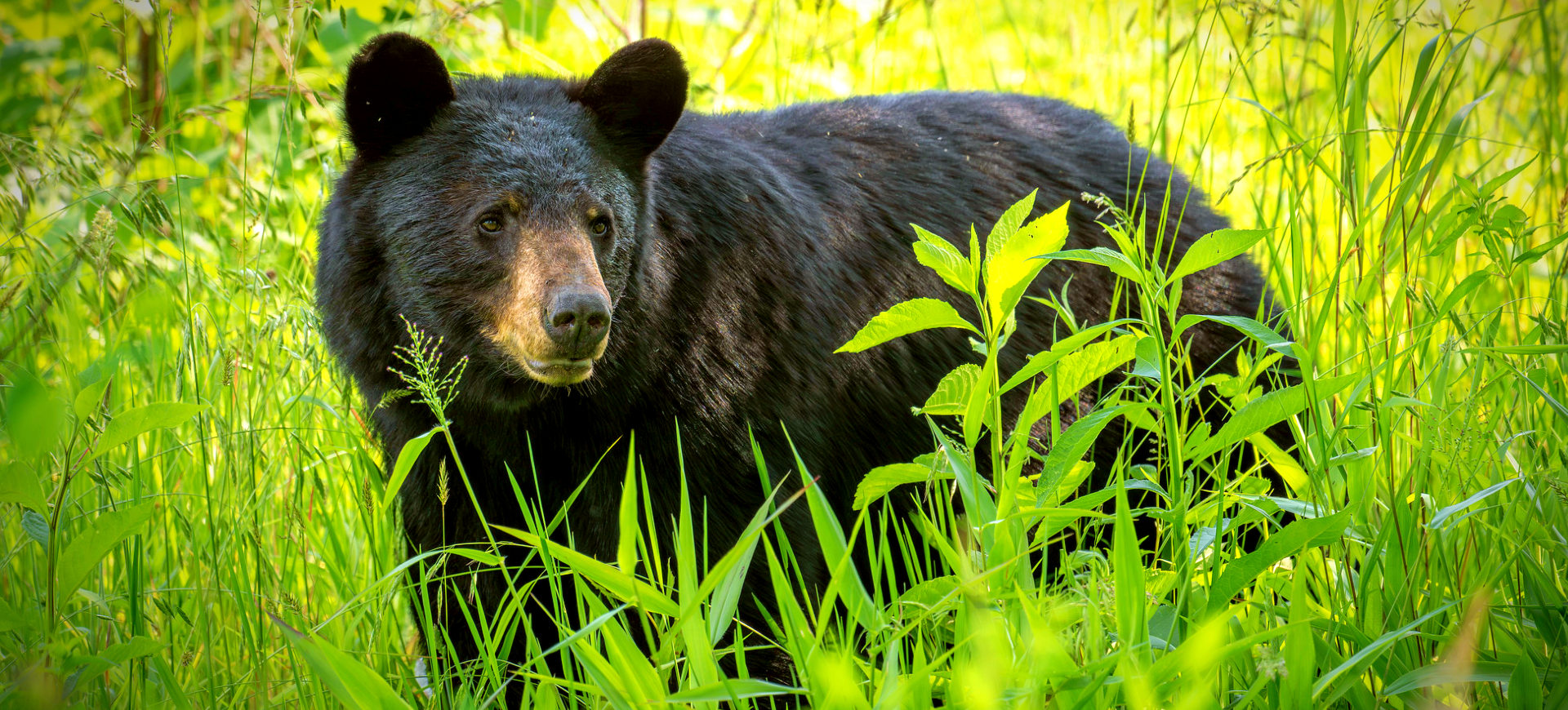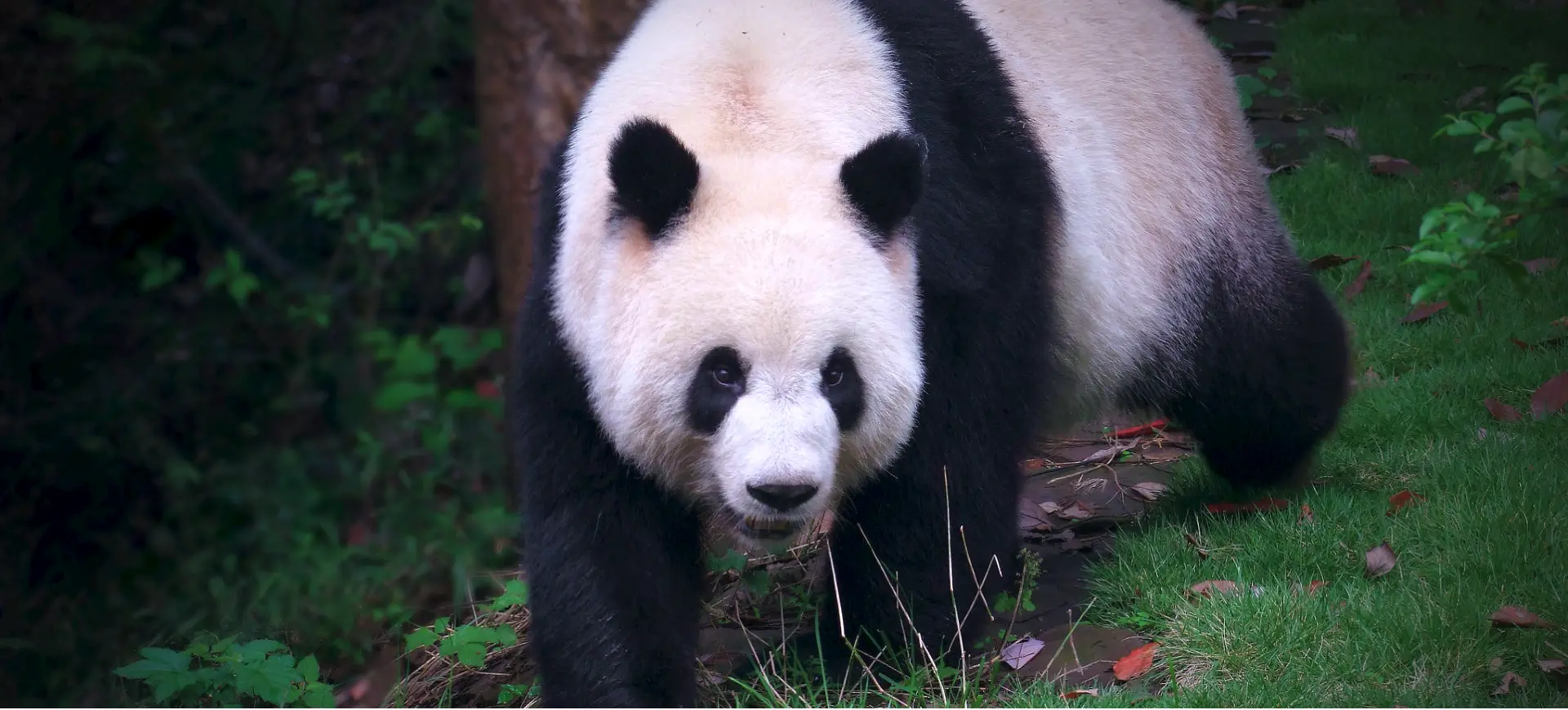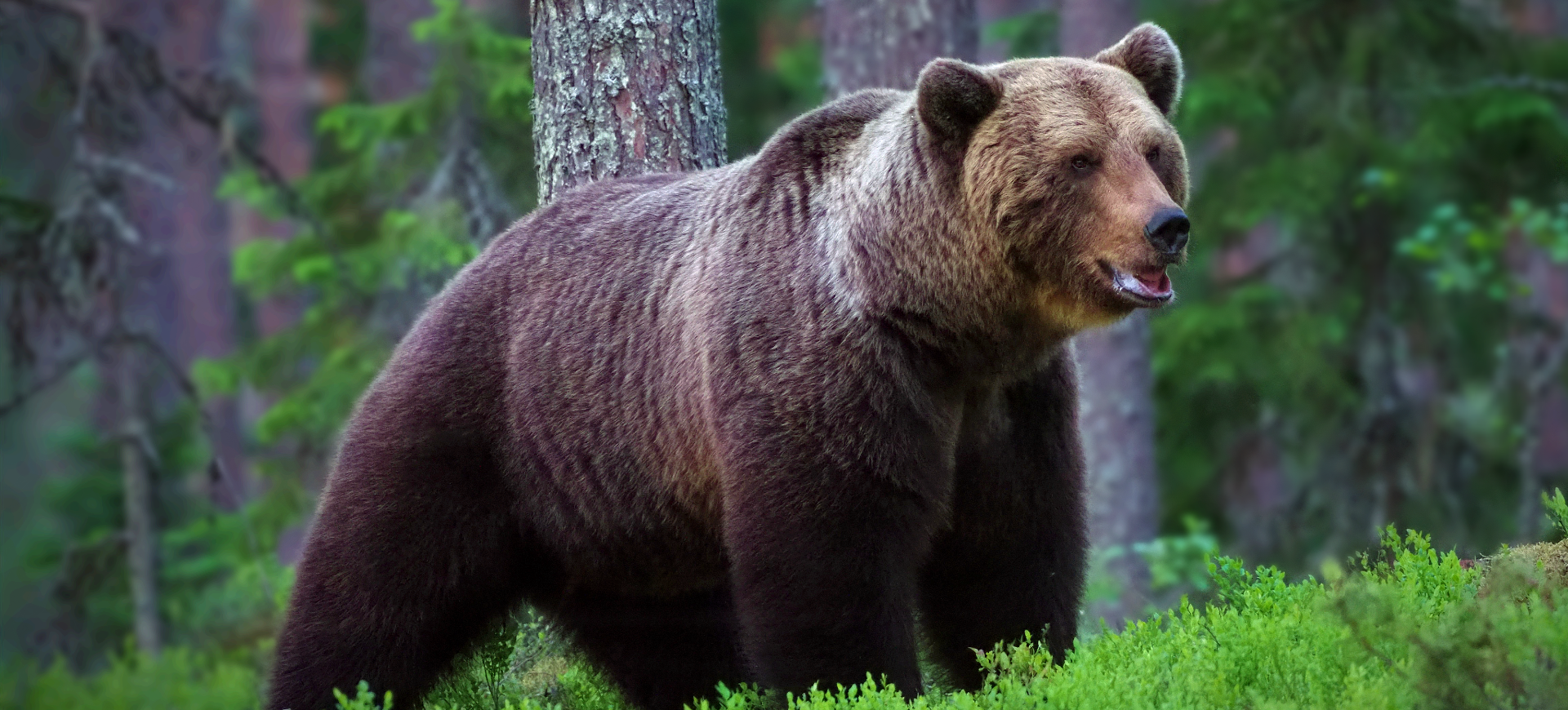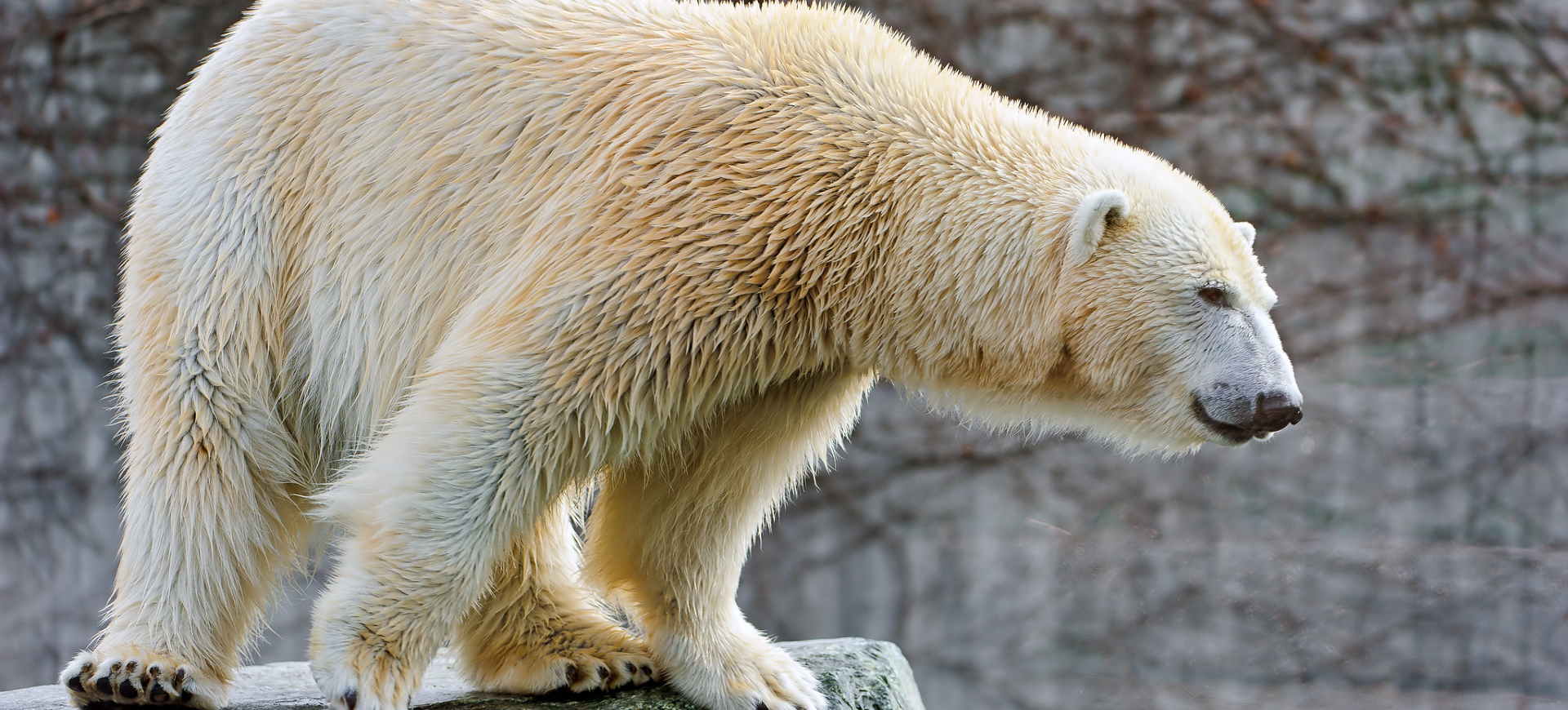Overview
The Bornean sun bear (Helarctos malayanus euryspilus) is a subspecies of the sun bear, native to the tropical forests of Borneo. It is the smallest bear species in the world, known for its short black fur, stocky build, and distinctive U-shaped chest patch. Sun bears are primarily nocturnal and highly arboreal, spending significant time in trees foraging for food and avoiding predators. Despite their small size, they are strong climbers and use their long claws to tear into tree trunks for insects and honey.
Bornean sun bears are solitary animals, with individuals only coming together during the mating season. They are highly opportunistic feeders, consuming a varied diet that includes fruits, insects, small vertebrates, and honey. Their long, curved claws and powerful jaws allow them to break open termite mounds and beehives easily. They play a crucial role in forest ecosystems by dispersing seeds and controlling insect populations.
This subspecies is threatened by deforestation, poaching, and the illegal pet trade, leading to severe population declines. Habitat loss due to palm oil plantations and logging has significantly reduced its natural range, forcing it into fragmented forest areas. Sun bears are often hunted for their gallbladders, which are used in traditional medicine, and some individuals are captured as pets. Conservation efforts focus on habitat protection, anti-poaching measures, and rehabilitation programs for rescued bears.
Taxonomy
Kingdom
Phylum
Class
Order
Family
Genus
Species
Sub Species
Type
Current distribution:
Bornean sun bears are found exclusively on the island of Borneo, which Malaysia, Indonesia, and Brunei share. Due to extensive deforestation, their distribution is highly fragmented, with the largest populations in protected areas such as Sabah’s Danum Valley and Kalimantan’s Betung Kerihun National Park. Although they are highly elusive and difficult to survey, camera traps and field studies suggest that their numbers are declining rapidly. Many sun bears now inhabit isolated forest patches, making them more vulnerable to genetic bottlenecks and local extinctions.
Logging, agricultural expansion, and palm oil plantations have significantly reduced their habitat, forcing them into closer proximity with humans. As a result, they are increasingly spotted in degraded forests and secondary growth areas, though their survival in such habitats is uncertain. Conservation efforts focus on preserving primary forests and establishing wildlife corridors to reconnect fragmented populations. Without stronger habitat protection measures, Bornean sun bear populations will continue to decline across their range.
Physical Description:
Bornean sun bears are the smallest members of the bear family, with a compact body adapted for life in dense forests. They have short, sleek black fur that helps them stay cool in the humid tropical climate and a distinctive golden or orange crescent-shaped marking on their chest. Their head is relatively small with a short, broad muzzle, and their tongue is long and flexible, ideal for extracting honey and insects from tight spaces. Their ears are small and rounded, positioned close to the head, reducing the risk of injury while moving through dense vegetation.
They have extremely strong forelimbs equipped with long, curved claws for climbing trees and breaking into termite mounds. Their large paws have hairless soles, providing extra grip when climbing vertical surfaces. Unlike larger bear species, their body is more agile and flexible, allowing them to navigate tree canopies easily. Males are slightly larger than females, but both sexes exhibit the same general body structure and adaptations.

Lifespan: Wild: ~25 Years || Captivity: ~30 Years

Weight: Male: 60-150 lbs (27-68 kg) || Female: 40-90 lbs (18-41 kg)

Length: Male: 47-59 in (120-150 cm) || Female: 40-53 in (102-135 cm)

Height: Male: 24-30 in (60-70 cm) || Female: 22-26 in (55-65 cm) (Shoulder)

Top Speed: 30 mph (48 km/h)
Characteristic:
Native Habitat:
The Bornean sun bear inhabits tropical lowland rainforests, peat swamp forests, and montane forests across the island of Borneo. They prefer dense, undisturbed forests with abundant fruiting trees, which provide essential food sources and nesting sites. As skilled climbers, they often seek refuge in the tree canopy, where they build nests out of branches and leaves for resting. They are highly adaptable and can survive in secondary forests, though they are most commonly found in primary forests with rich biodiversity.
Their home ranges can vary in size depending on food availability, and they tend to avoid open areas where they are more vulnerable to predators and human threats. Unlike other bear species, they rely less on large bodies of water, obtaining most of their hydration from their diet. Fallen logs, tree cavities, and dense undergrowth provide shelter and protection from potential threats. Continued habitat destruction has forced some sun bears into fragmented forest patches, limiting their ability to find food and mates.
Climate Zones:
Biomes:
WWF Biomes:
Biogeographical Realms:
Continents:
Diet:
Diet & Feeding Habits:
Bornean sun bears are omnivorous, consuming a diverse diet that includes fruits, insects, small mammals, birds, eggs, and honey. They prefer figs and other soft fruits, which they help disperse throughout the forest. Their strong claws and powerful jaws allow them to tear into rotting logs, beehives, and termite mounds to access protein-rich insects and larvae. Their exceptionally long tongue, reaching up to 10 inches (25 cm), helps them extract honey deep within tree cavities.
These bears are skilled foragers, using their keen sense of smell to locate food sources hidden underground or within tree bark. They are essential in controlling insect populations and aiding forest regeneration by spreading seeds. Unlike other bear species, they do not hibernate due to the consistent food availability in their tropical environment. They spend much of their time searching for food, often traveling long distances within their home range.
Mating Description:
Bornean sun bears have a polygynous mating system, where males may mate with multiple females during the breeding season. Mating can occur year-round, though births are more common during fruiting seasons when food is abundant. Courtship behaviors include vocalizations, playful interactions, and gentle nuzzling before mating. Unlike some bear species, sun bears do not have a strict breeding season, allowing them to reproduce when conditions are favorable.
While the social behavior of Bornean sun bears is not fully understood, some studies suggest they may exhibit monogamous tendencies, forming strong bonds with a single mate rather than adopting a polygynous system. Unlike many other bear species that engage in multiple mating partnerships, certain observations indicate that sun bear pairs may stay together for extended periods. This potential monogamous behavior could influence their interactions, cooperative behaviors, and even parental investment. However, due to their elusive nature and the dense environments they inhabit, more research is needed to confirm the extent of monogamy in this species.
Reproduction Season:
Birth Type:
Pregnancy Duration:
Female Name:
Male Name:
Baby Name:
Social Structure Description:
Bornean Sun Bears are typically solitary creatures, preferring their own company to others. Adult males and females only converge for the specific purpose of mating, otherwise leading separate lives. Instead of being territorial, these bears carve out home ranges, where they roam freely for food and mates. Interestingly, the home ranges of different individuals often overlap, suggesting a certain level of tolerance for their kin within these boundaries.
Communication between these solitary bears is primarily facilitated through scent marks and vocalizations. They use scent marking to convey messages to other bears in the vicinity, including reproductive status and territorial boundaries. Vocalizations also play a significant role, with a repertoire including grunts, roars, and whines, each with a different meaning. Activity in Bornean Sun Bears tends to peak at night, likely an adaptation to avoid human activity in their habitats, thereby reducing potential human-bear conflicts.
Groups:
Conservation Status:
Population Trend:
Due to their secretive nature and the remote and dense habitats they occupy, the exact wild population numbers for the Bornean Sun Bear are unknown. However, their population trend is decreasing due to significant threats such as deforestation and commercial hunting. Their population in captivity is also not well-documented. Bornean Sun Bears are found in several zoos worldwide, but these individuals represent only a fraction of their wild counterparts.
The fragmentation of their habitats due to logging and conversion to palm oil plantations is a severe threat. This fragmentation reduces their available habitat, opposes a risk of genetic isolation, and increases human-wildlife conflict. Additionally, Bornean Sun Bears are also threatened by commercial hunting for their body parts, especially gallbladders used in traditional medicine.
Population Threats:
The Bornean Sun Bear faces various threats that have led to a significant decline in its population. Habitat loss due to deforestation, primarily driven by logging and land conversion for palm oil plantations, is perhaps the most pressing threat to this species. This not only leads to the loss of their native habitat but also to the fragmentation of their population.
Illegal wildlife trade also poses a severe threat to Bornean Sun Bears. They are hunted for their gallbladders, which are used in traditional Asian medicine, and for their meat, which is considered a delicacy. Moreover, young cubs are often captured and sold as exotic pets. Enforcement remains a challenge despite regulations and illegal hunting continues in many regions.
Conservation Efforts:
Several conservation initiatives are underway to safeguard the Bornean Sun Bear. This species is listed in Appendix I of the Convention on International Trade in Endangered Species (CITES), effectively prohibiting international trade of these bears. Additionally, most of their range countries have legislations in place to protect them.
Nonprofit organizations such as the Bornean Sun Bear Conservation Centre in Malaysia and the Wildlife Alliance in Cambodia actively contribute to the bear’s survival. They rehabilitate rescued sun bears and work towards reintroducing them into the wild. These organizations also engage in research and raise awareness about the bear’s importance to the ecosystem. Efforts are made to protect and restore the bear’s natural habitats, including establishing protected areas and promoting sustainable logging practices. Collaboration with palm oil companies aims to reduce the plantations’ impact on the bear’s habitats.
Additional Resources:
Fun Facts
- The Bornean Sun Bear is the smallest species of bear in the world.
- Their long tongue, which can reach up to 25 cm in length, is perfect for extracting honey from beehives, earning them the nickname “Honey Bear.”
- Bornean Sun Bears have an excellent sense of smell, which is 1,000 times better than humans.
- Their loose skin on the neck allows them to twist almost all around to bite attackers when held.
- Bornean Sun Bears contribute to the health of the forest ecosystem by controlling termite populations.
- They are excellent climbers and can often rest or sunbathe high in the trees.
- Bornean Sun Bears significantly impact the ecosystem as they are prolific seed dispersers, helping many plant species to thrive.
- Each Bornean Sun Bear has a unique chest patch, like a human’s fingerprint.
- Bornean Sun Bears don’t hibernate like some other bear species due to the consistently warm climate of their habitat.
- The Bornean Sun Bear’s teeth are flatter and less sharp than other bears because their diet includes a lot of insects.


